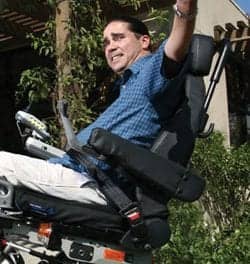 |
Age is not a particularly interesting subject. Anyone can get old. All you have to do is live long enough.—Groucho Marx (1895-1977), American humorist
There is one human condition that transcends all socioeconomic barriers—the inevitability of growing old. According to recent statistics released by the Centers for Disease Control and Prevention, there are more than 36 million Americans over the age of 65 (that number is expected to double within the next 25 years). And, thanks to residing in a culture where fitness, nutrition, and physical well-being have become a universal pursuit, many older Americans are enjoying better health and more active, affluent lifestyles than their predecessors. Despite this positive reflection on the current population of seniors, an estimated 80% of these individuals suffer from at least one chronic illness. As the number of seniors facing chronic medical conditions increases, so does the cost of providing medical coverage. As more individuals face short- or long-term rehabilitation, who will be there to help?
Since medical coverage is in a constant state of fluctuation, health experts agree that the obvious approach to decreasing long-term illness, and helping senior citizens maintain independent lifestyles, is to initiate a preventive protocol, including embracing a healthy lifestyle that incorporates a sensible diet, exercise, and not smoking; early disease screenings to detect and aggressively treat disease in its early, more manageable stages; and self-management techniques to prevent falls—which are the most common cause of injury in the aged—as well as scheduling immunizations for influenza and pneumonia.
The physical rehabilitation industry can play a primary (not to mention, profitable) role in aiding the nation’s aging population. By spurring recruiting efforts to bulk up the ranks of PTs in areas of the country where there are shortages, PTs and OTs can be ready to assume instrumental roles in consulting elderly clients with their short- and long-term needs, as well as participating in the creation of new and innovative tools to assist these individuals in the course of their daily lives. In addition, with the constant changes in reimbursement, it is quite possible that, in the not-too-distant future, many elderly individuals will be left to arrange their own rehabilitative care programs—out of pocket—or, possibly, go without. For elderly individuals who are dealing with a physical or mental impairment, this could be an unfortunate possibility.
In a perfect America, everyone could live out their lives in the comfort of their home. The reality is that a growing number of older individuals with health problems are not receiving the medical care they need. This is where advocacy groups need to take a long, hard look at the future of health care in this country, and work with private and government organizations in creating a tiered health care program that enables senior citizens to seek some level of the medical or rehabilitative care they need, regardless of age, race, and socioeconomic background.
After all, with age comes knowledge, experience, and wisdom—and, with the proper care, may we all live long enough to attain it.
—Rogena Schuyler Silverman





